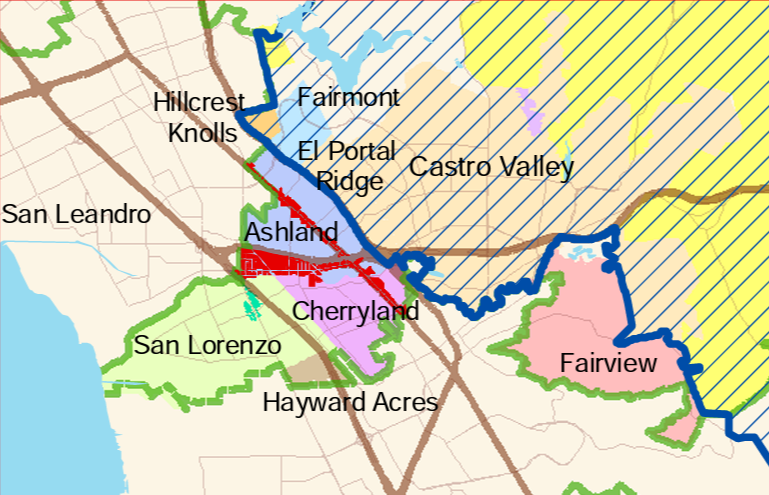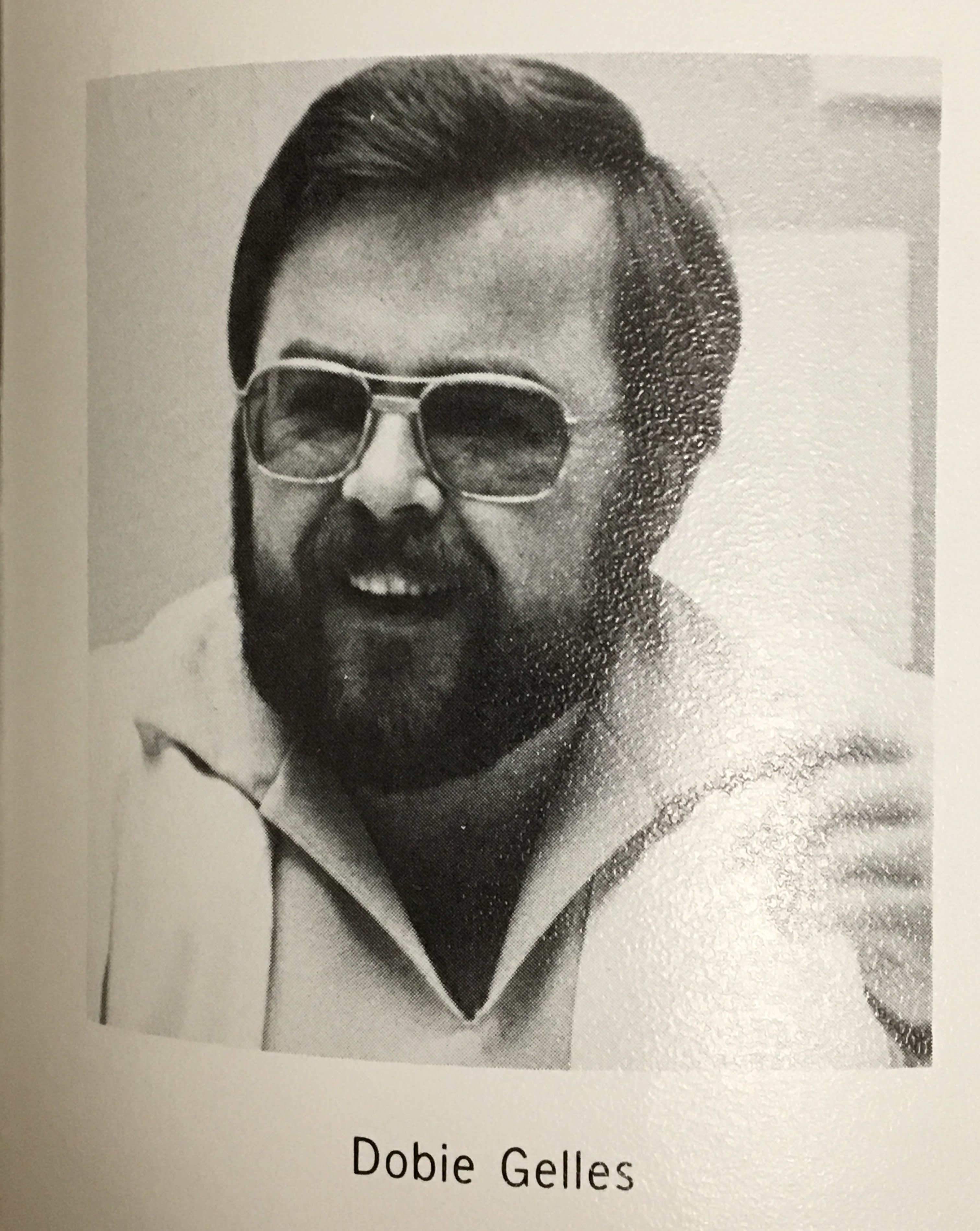Supervisors to hear proposal for incorporation fiscal analysis
- By : Michael Kusiak
- Category : Governance
- Tags: Incorporation, LAFCO, Unincorporated Governance, Unincorporated Services Committee, Vehicle License Fee, VLF

The Alameda County Board of Supervisors Unincorporated Services Committee, a committee made up of Supervisors Nate Miley and Dave Brown, meets on Wednesday, April 27 at 6:00 pm to hear from the Local Agency Formation Commission (LAFCo) about a proposed fiscal analysis of the feasibility of incorporating Castro Valley and the other Alameda County unincorporated communities.
LAFCo, an independent local agency created by the State of California that determines the boundaries of cities and special districts, plays a role in determining the viability of possible municipal incorporation and the consolidation of existing public agencies. The agenda describes the scope for the proposed study as follows:
Alameda LAFCO is looking to contract with Berkson Associates to perform a Preliminary Comprehensive Fiscal Analysis (PCFA) for the unincorporated areas of Castro Valley, Cherryland, Ashland, San Lorenzo, and Hayward Acres. The purpose of the PCFA is to provide LAFCO and the community with clear and objective information about the viability of incorporation, its costs, and tax revenue implications. The report will describe potential benefits and goals of incorporation while focusing on initial startup and costs of operation over the first five years of incorporation. The report will demonstrate the short-term and long-term fiscal viability of incorporation and provide a basis for subsequent review and discussion and decisions by the public, the County, and LAFCO. Boundary options will be defined. It is assumed that up to three incorporation scenarios will be evaluated. These options share common assumptions but will also require separate data collection for each area and a budget that may be modified to reflect unique characteristics.
1. Castro Valley
2. Castro Valley plus Ashland, Cherryland, San Lorenzo, and Hayward Acres
3. Ashland, Cherryland, San Lorenzo, and Hayward Acres (excludes Castro Valley
This document will provide LAFCO, affected agencies, and residents with a quantitative understanding of the pros and cons of cityhood to help decide whether to move forward with incorporation and to understand its financial and service implications.”
The scope of the proposed study does not include Fairview, an unincorporated area next to the Five Canyons development and east of Hayward with a population approaching 11,000.
In a typical incorporation process, a group of citizens would raise the funds for LAFCo to conduct a study on the fiscal viability of incorporation. Previous attempts to incorporate Castro Valley have failed (the 2002 vote on incorporation garnered 27.9% in favor and 72.1% against incorporation and the 1957 vote was 75% against), but the only reason why citizens were able to vote on incorporation in 2002 was because our LAFCo deemed, based on an exhaustive fiscal analysis that a “City of Castro Valley” would be fiscally viable. LAFCo serves as a gatekeeper of municipal incorporation.
Incorporation nearly impossible under current law
The last California community to incorporate was Jurupa Valley in Riverside County in 2011. In the summer 2011 the California Legislature passed Senate Bill 89, reallocating Vehicle License Fee (VLF) revenue away from cities and counties to pay for law enforcement programs under fund Public Safety Realignment. VLF, paid by every Californian who registers their automobile, was a critical revenue source for cities and counties, particularly new cities. SB 89 legislation was written in a way that backfilled funding for all but Jurupa Valley and three other recently incorporated cities. On its first day as a city, two days after the passage of SB 89, Jurupa Valley was in fiscal distress.
Because of SB 89, “Virtually all annexations of urbanized areas and new city incorporations have been made financially unfeasible by the loss of huge amounts of revenues that previously would have gone to these areas,” according to CaliforniaCityFinance.com.
For the next few years, Jurupa Valley and the three other Riverside communities fought to have their lost VLF restored to avoid fiscal insolvency and disincorporation. In 2017, these funds were restored when Riverside County members of the California Legislature threatened to stand in the way of SB 1, Governor Jerry Brown’s signature piece of legislation for $54 billion in road projects for California. SB 1 became law on April 28, 2017.
SB 130 became law May 12, 2017, when Governor Jerry Brown signed the bill in Jurupa Valley. SB 130 fixed the situation for the four Riverside cities, but it did not fix the problem that prevents future incorporations in California.
Considerations as LAFCo explores viability of incorporation
LAFCo must concede the impact on fiscal feasibility with AND without a fix to the VLF problem. LAFCo’s report will create facts for possible future incorporation efforts. It is important that this report distinguishes between the arbitrary laws that redirect revenue generated in our communities to other purposes and our actual fiscal viability. As I conceded in a public debate in 2012 about the merits of incorporation, so long as the State does not fix the VLF problem, it is very unlikely that we will see any incorporations in the State of California (and we haven’t seen any since 2011…and that city almost had to disincorporate).
A glaring omission from the scope of LAFCo’s proposed study is looking at the viability of each Eden Area unincorporated community to achieve cityhood. Castro Valley, Ashland, Cherryland, San Lorenzo, Fairview, and Hayward Acres are distinct communities that should each have a pathway to achieve local control. The community organizer in me recognizes that people do have a understanding of where their community begins and ends. We must reject a strategy of pitting our communities against each other for fear that we cannot each control our affairs. This has been a common tactic that many of us have witnessed firsthand in our efforts for accountable local governance. All of our communities should and can be incorporated. There are plenty of incorporated communities in California that are much smaller and have smaller tax bases than the unincorporated communities of Alameda County.
The proposed scope does not consider annexation as an option. While I personally support an incorporated Castro Valley and the right of all unincorporated communities to seek incorporation, annexation is another tool that should be on the table. LAFCo should expand the scope of the report to discuss the viability of annexation, a common strategy used in places like Orange and Santa Clara Counties to provide municipal governance to urban unincorporated communities.
As I wrote in 2017, “We should have the ability, just as existing cities did, to give local voters the option to choose cityhood and to incorporate.” I look forward to a renewed conversation about why all Californians should have representive, elected municipal governance.
The Unincorporated Service Committee meeting starts at 6:00 pm on Wednesday, April 27, 2022
- Webinar: https://zoom.us/j/84684430209
- Phone: 877 853-5257 (Toll Free) Webinar ID: 846 8443 0209


